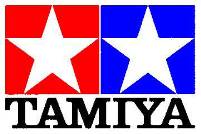In 1976, the Tyrrell team again went into secret mode and came up with the Project34. another Derek Gardener design and arguably one of the two most radical entries ever to succeed in F1 ( the other being the Brabham BT46B "Fancar") The history of the concept has been traced back to Gardeners work on the Four wheel drive turbine cars of the late 1960s. What is more the idea has now been proved to have real merit.
With most F1 teams running the same Ford Cosworth DFV engine performance gains had to be found in other places. For Gardiner it was to improve handling, stability and straight line speed. His research led him to design a car with four small front wheels tucked inside the body.
It has long been stated that the reason for the smaller front wheels was to reduce frontal area, but this is a secondary issue, after all the rear tyres were standard size and still stuck out in the airflow. The real reason is that the smaller front wheels helped reduce front end lift and thus improve stability. The four small tyres actually increased the contact patch with the road meaning better mechanical grip for braking and turning.
Thus the P34 was given four 10-inch front wheels. This required a complex suspension design so all the front wheels could be steered. The design had an unforeseen safety advantage too, when a car came into the pits with the driver complaining of understeer it was found to have a puncture! This hadn’t stopped him lapping at racing speeds either. One problem of having smaller front wheels was an increased tyre wear rate. For every turn of the rear tyre, the front must travel 1.6 times as far. Meaning that if the rear wheel is travelling at 200 mph, the front tyres are travelling at a comparative 320mph. This caused tyre distortion at high speeds.
The P34’s achieved a 1-2 finish at the Swedish GP in 1976 and they did have some other good results, but became less and less competitive due to lack of tyre development. While other teams on the standard tyres benefitted from tyre development Tyrell, being the only people running 10in' wheels, fell behind. Worse was the fact that the rear tyres were being developed and as they became quicker the car became more unbalanced.
Proof of this is found in the Thoroughbred Grand Prix series were Avon spent a considerable amount of time and money to provide tyres for Simon Bulls car driven by Martin Stretton. They won the 2000 TGP and this feat was repeated by Mauro Pane driving a sister P34 in 2008.
1/20th scale kit.
Built by Ian.


This is Tamiya kit # 2001, that means, 1/20th scale (note their road and rally car kits all start 24 for 1/24th scale) and number 1 of this kit series. So here he have the first of Tamiya's 1/20th F1 kits and the start of 1/20th scale becoming the standard scale for F1 kits. One might ask why Tamiya suddenly decided that 1/20th scale was the way to go? We believe this is due to the 1970s idea of putting motors and batteries in models. The little motors were (are still) to big to fit inside a 1/24th scale Cosworth DFV engine and while many manufacturers sacrificed scale and detail accuracy putting these motors into enlarged engines with token details, Tamiya chose to increase the size of the kit engine to fit the motor and keep the scale the same for rest of the model, thus providing scale accuracy and a high level of detail in their kits.
This is another of Ian's earliest car models, probably the third one, built straight out of the box in 1991. Overall Tamiya kits are straightforward to build and well detailed giving encouragement to the novice builder. This kit does have some issues though. The front suspension is a little fiddly and it is hard to get all four front wheels sitting squarely. This is compounded by very loose rear wheels (a long pin in the wheel pushes into a poly cap held within the upright halves), although this does compensate for any errors in getting the engine totally horizontal and inline with the ground and the body.
One of the worst aspects of the model now are the decals which haven't gone down well and are rather opaque. This is mostly due to Ian not getting all the air out from underneath the decal. Now we have decal setting and softening solutions, (and understand that decals go down much better over gloss paint then the plain plastic) this problem occurs much less. The opaque effect was emphasised when Humbrol "Clearcote" was applied over the body work to get a gloss finish. This also turned out to be a mistake as years later Ian discovered this product remains soft so dust and dirt eat their way into the finish making the surface very difficult to clean.
All these years later it is clear that much more can be done with this kit and another one is on the "to do" list, amongst at least three more versions of this car from various kit manufacturers charting the progress of this innovative design.
RETURN TO -
